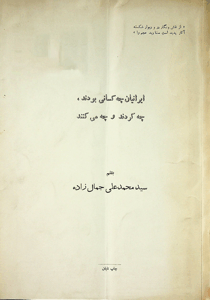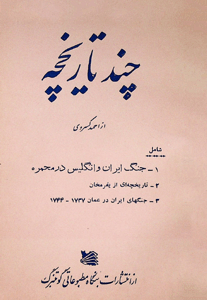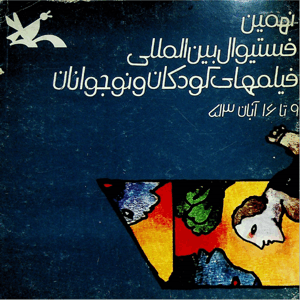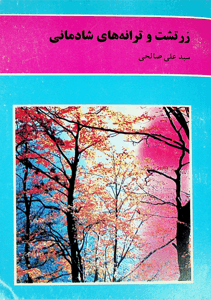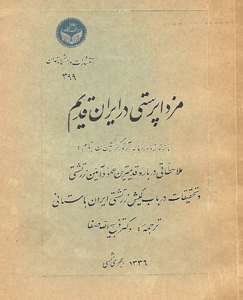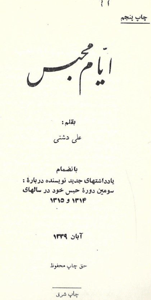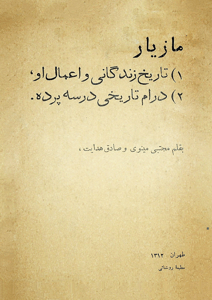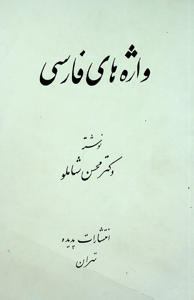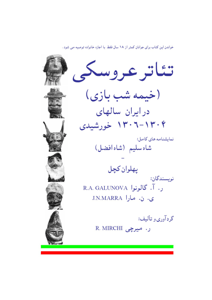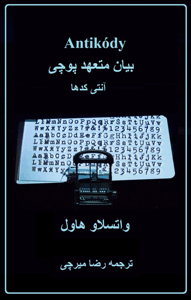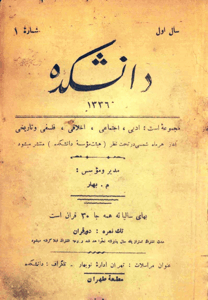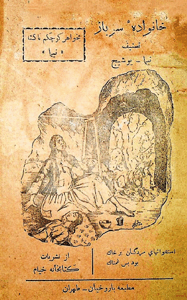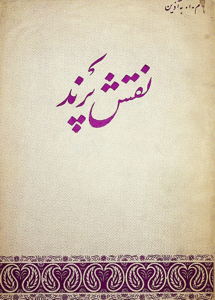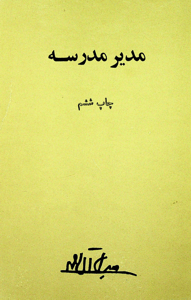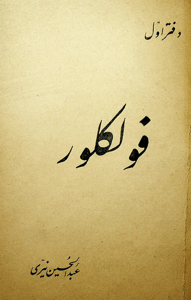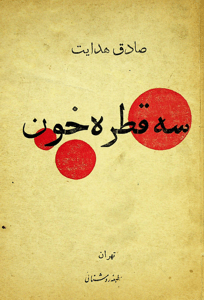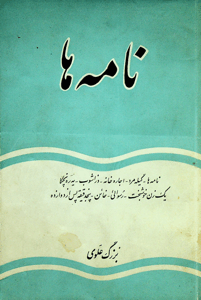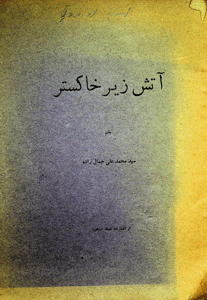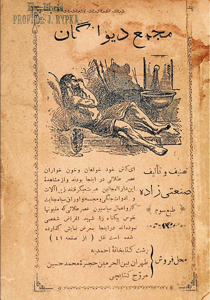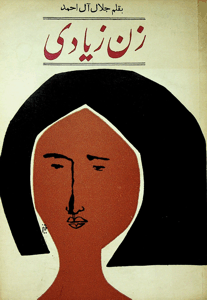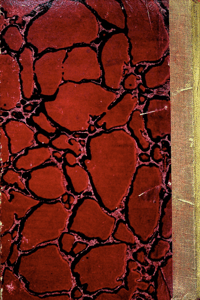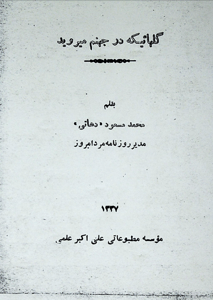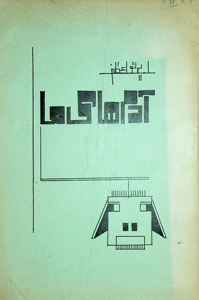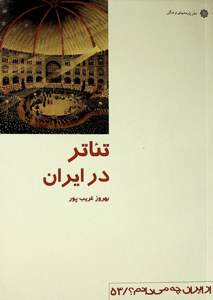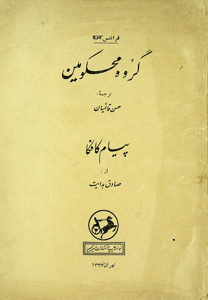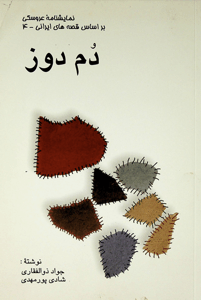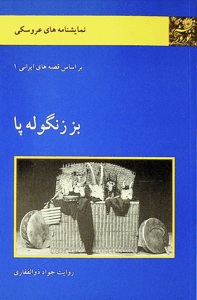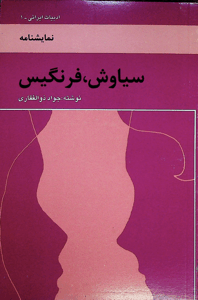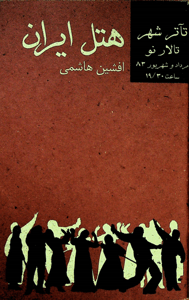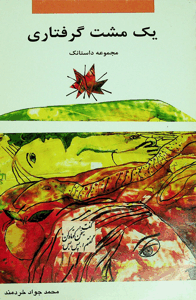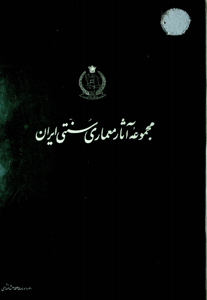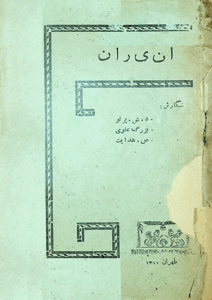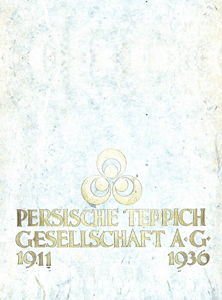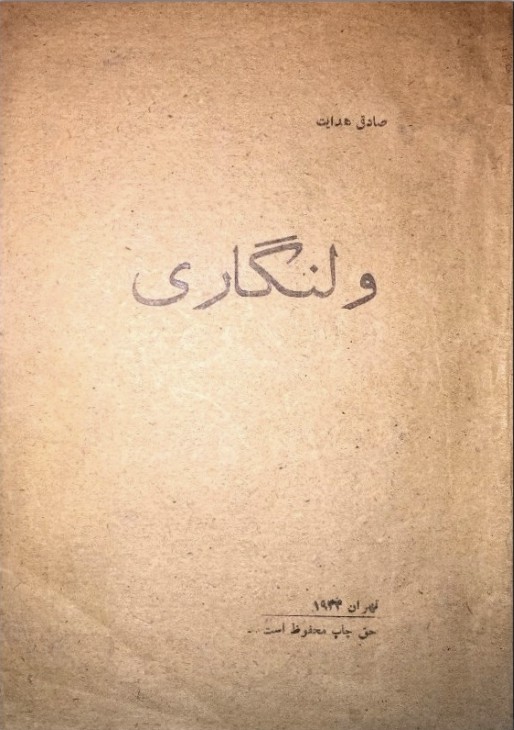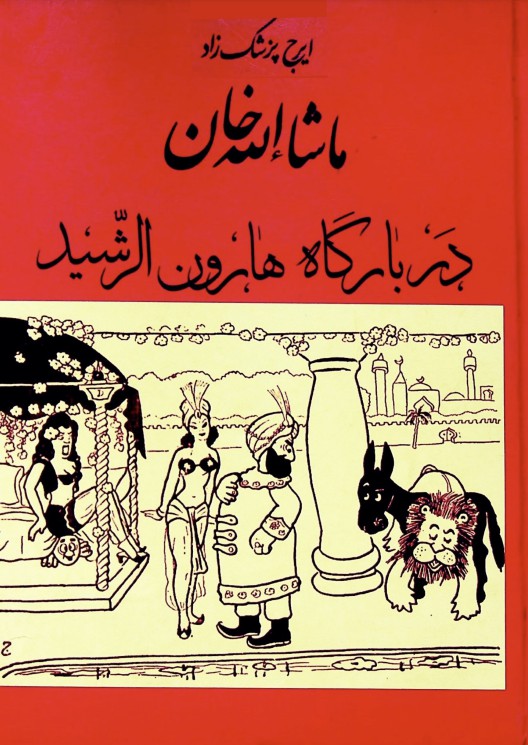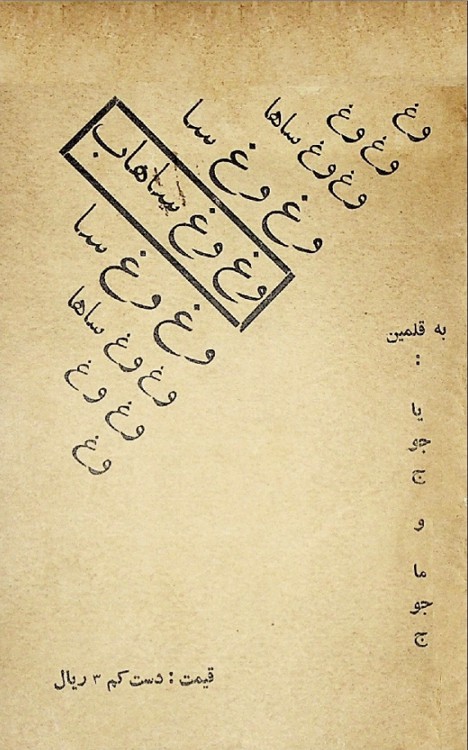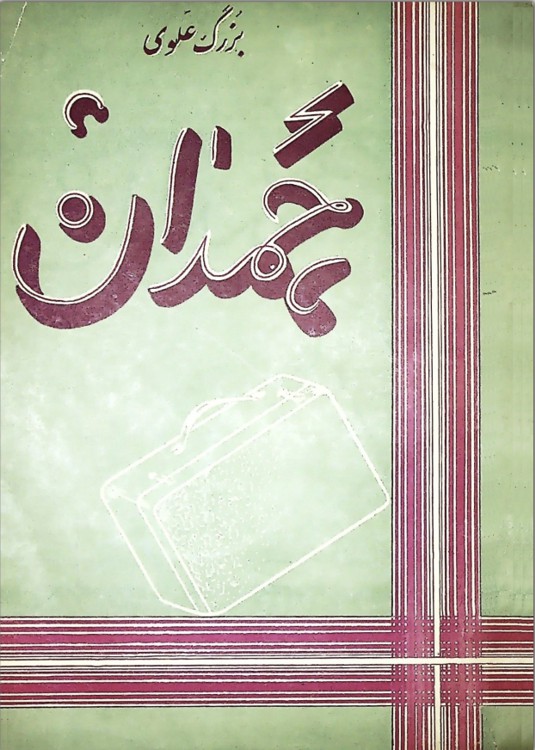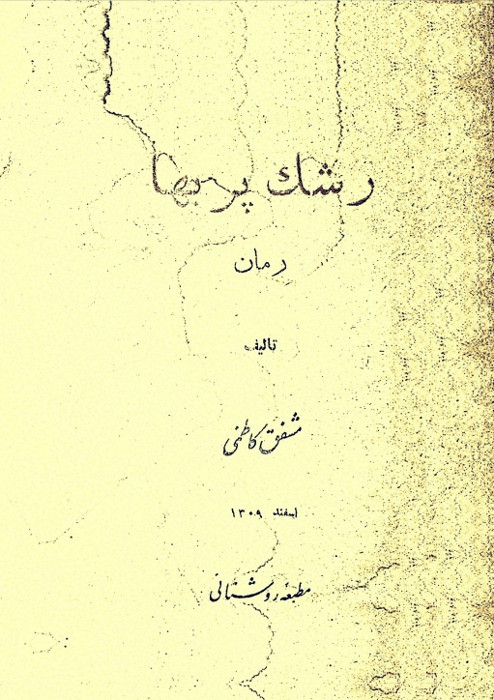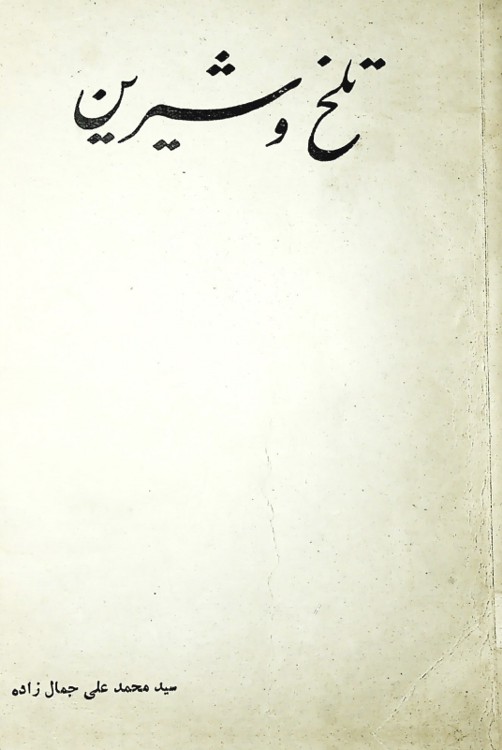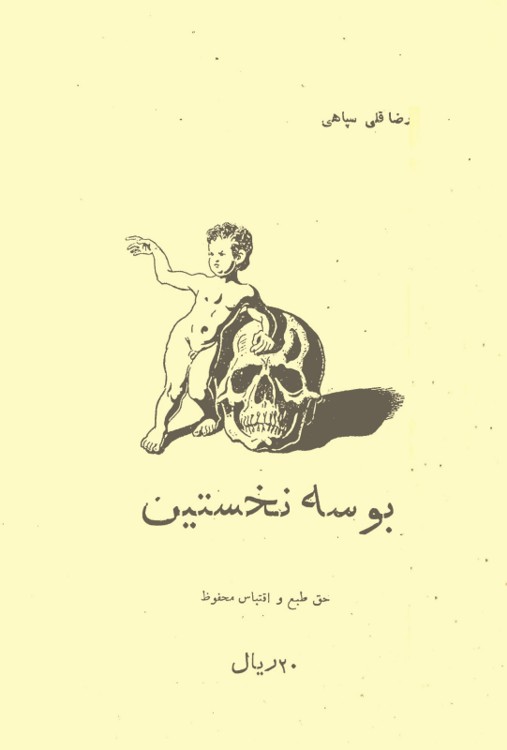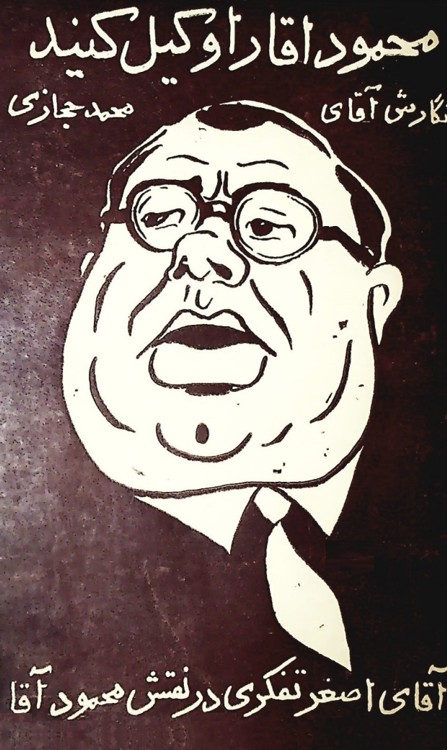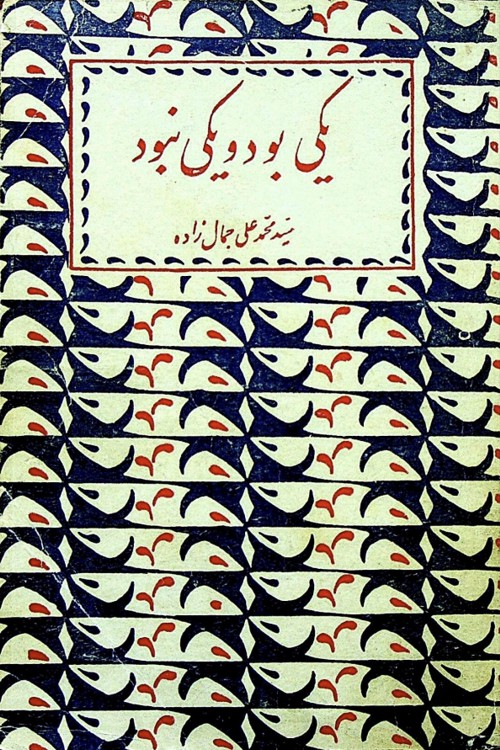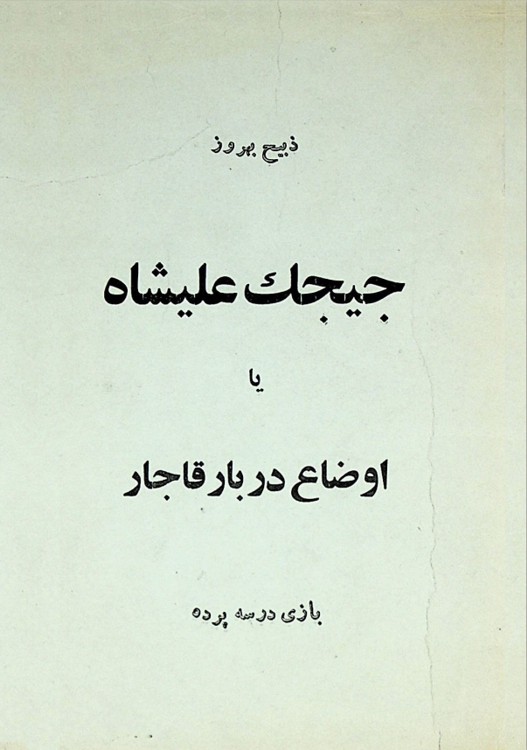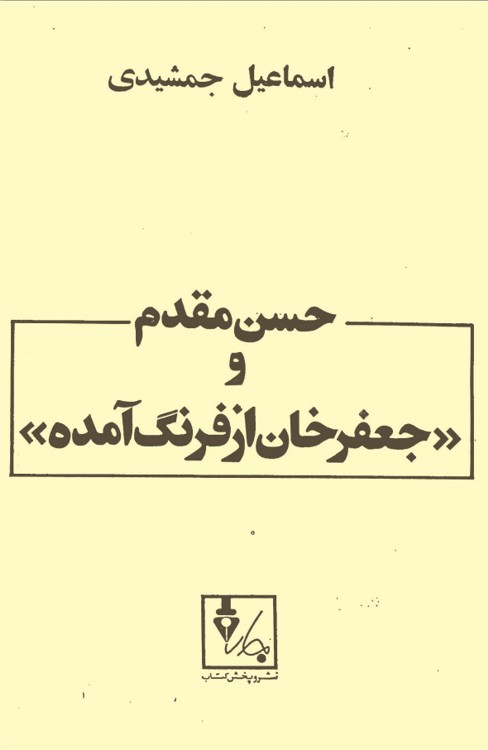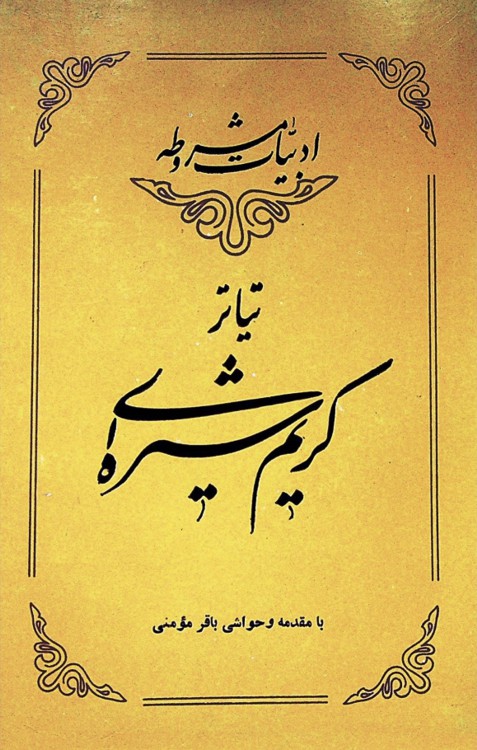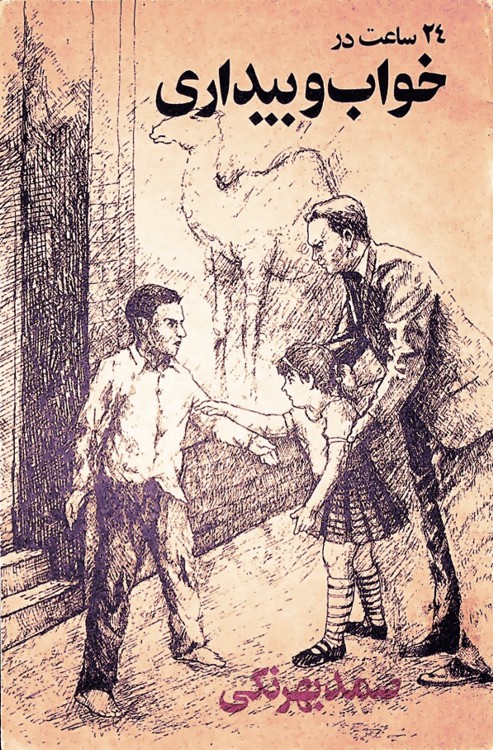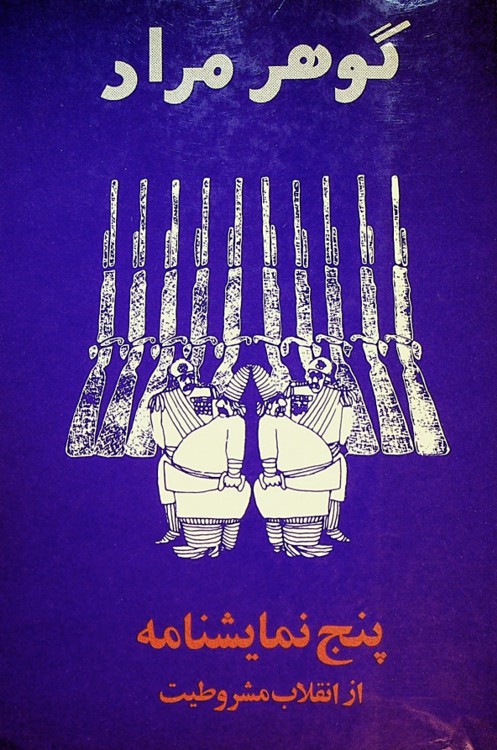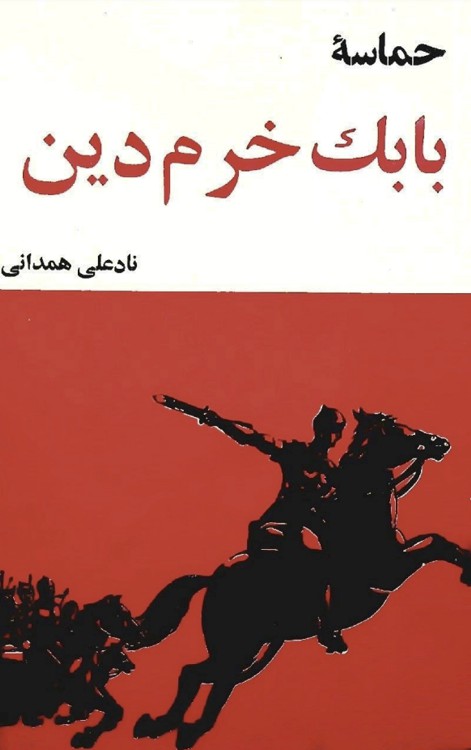Who were the Iranians, what did they do and what are they doing?
Seyed Mohammad Ali Jamalzadeh
Taban Press, December 1334, Geneva
Some Histories
Ahmad Kasravi
from Gutenberg Press, Zandegi Printing House, 1339
9th International Film Festival for Children and Adolescents
Center for Intellectual Development of Children and Youth, Tehran 1974
Zarathustra and the songs of happiness (restoration of Avesta gathas)
Seyyed Ali Salehi
Pasargad Publishing House, Tehran, 1990
Worship of Mazda in Ancient Iran
translated by Dr. Zabih Elah Safa, Tehran University Press, 1957
Farsi words (Važehaye Farsi)
written by Dr. Mohsen Shamlou
Padideh Publications, Tabash Printing, Tehran 1335
Tatre Arusaki (Puppet Theater)
This book discusses the early beginnings and development of puppet theater in Iran, as well as the historical aspects of the expansion of this type of art around the world.
It is worth mentioning two original puppet plays, more than 100 years old, the study of which, especially the method of execution and the language used, can be beneficial for contemporary researchers and puppet theater performers.
Kheyme Shab Bazi
1925-1927 in Iran
Reza Mirchi, Pardis Publishing House, Prague, p. 97, 1914
Anticodes
Václav Havel's typograms are beginning to appear at a time when there are attempts in the world of art to free man from the mechanisms of acquired formal customs. There is a gradual decomposition of perception patterns around the world. Until now, man has evaluated form according to how it fulfilled his established idea of perfection and finiteness. In response to these conventions, forms are created that do not allow the viewer's or reader's attention to be more comfortable and dull; they are changeable, open, as if unfinished. Instead of the immutability and inviolability of the existing canons, there is unlimited variation, boiling, permuting, violation of form, but not entirely arbitrary, but deliberately controlled. And it is the function and fixed direction that most distinguishes Havel's typograms from most of the artificial, aesthetically focused texts of the international movement of concrete or experimental poetry of the 1960s. (Josef Hiršal)
Václav Havel
Reza Mirchi
Pardis Publishing House, Prague, p.160, 1914
Daneshkadeh Magazine (12 issues)
Daneshkadeh magazine was founded by Malekalshoara Bahar in 1918 in Tehran to publish works by the literary association Daneshkadeh. This association was first called "Daneshkadeh Bahar" and was founded in 1917 by the efforts of several friends of literature, including writers, and in a year was renamed "Daneshkadeh". The aim of this association was to promote new meanings in ancient Persian poetry and prose and to show the necessary need to become acquainted with European prose. The publication of Daneshkadeh magazine, the 1st issue of which was published on April 21, 1918, was permanently terminated after the publication of 12 issues.
Individual numbers can be downloaded HERE:











Bustan magazine
The Czech-Iranian Society was a civic association founded in 1998. It
brought together all those interested in Iran and other Iranian language
areas - especially Tajikistan and Afghanistan. The company had about 170
members. Bustan was intended for all Persian-speaking nations and groups
of people, and its aim was to become a small bridge between these
nations and people who love the culture of these nations.
For the last 3 years before the termination of the activities of the
Czech-Iranian company, Dr. R. Mirchi, who changed the overall concept
and emphasized Old Opera culture.
Individual numbers can be downloaded HERE:
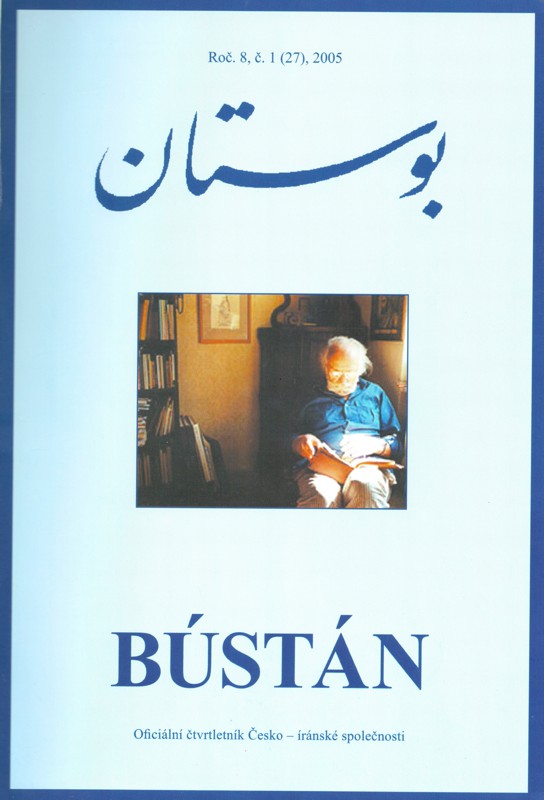
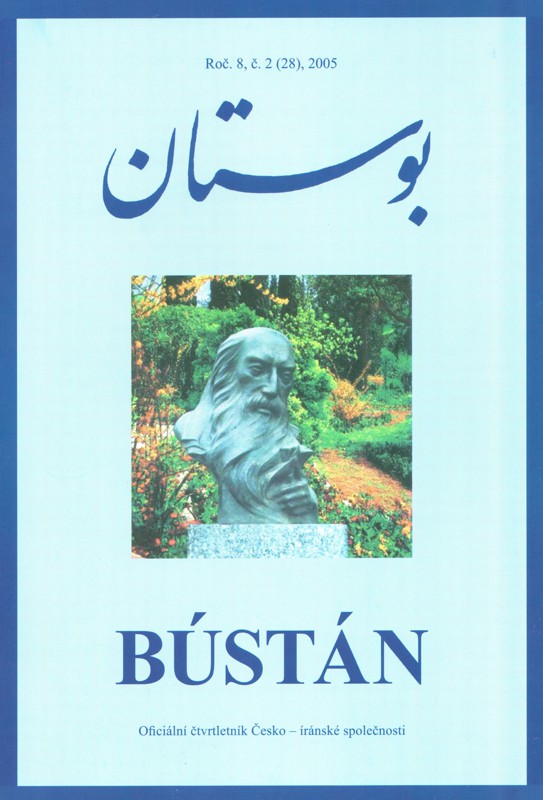
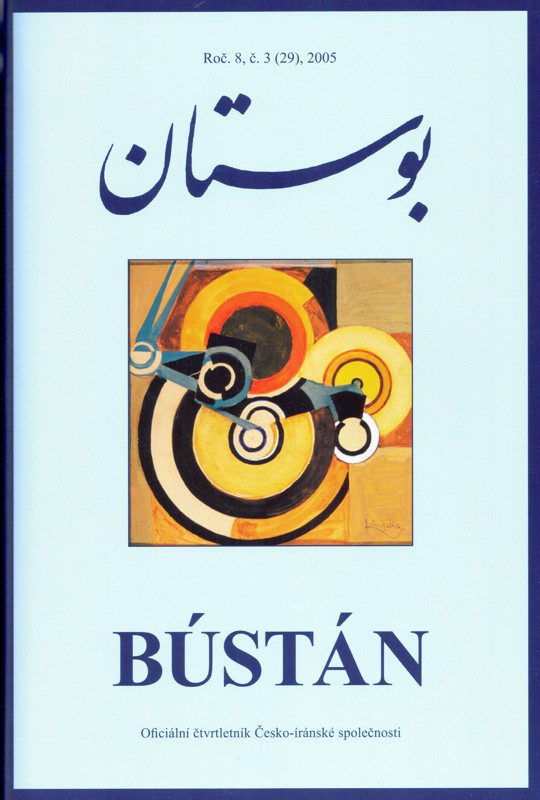
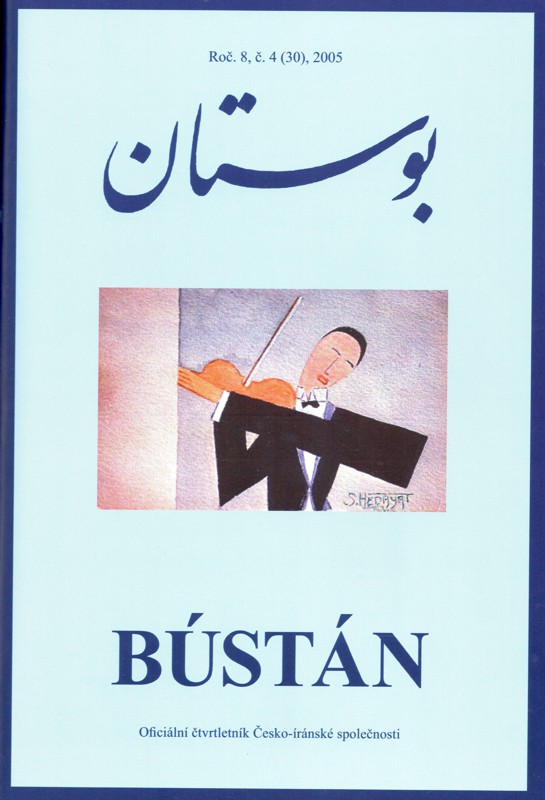
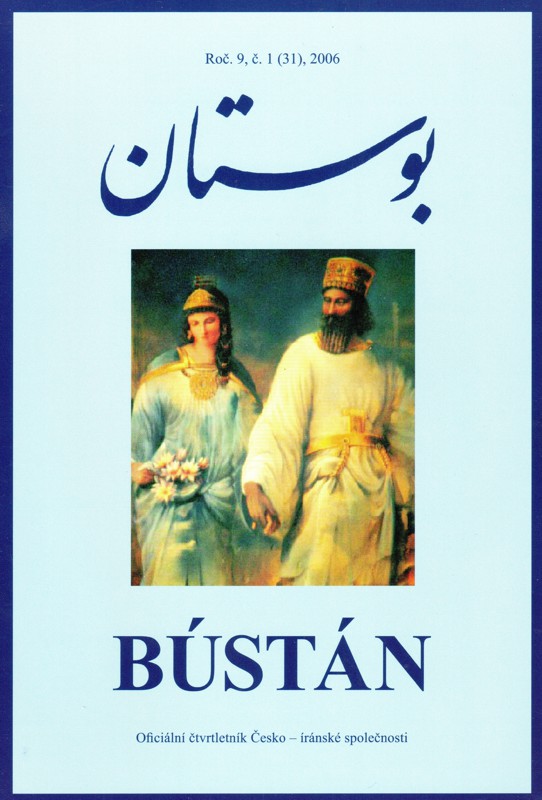
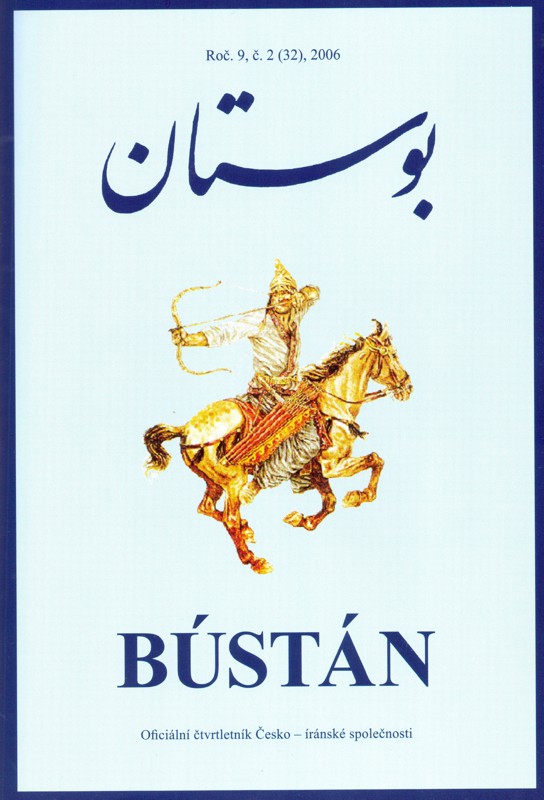
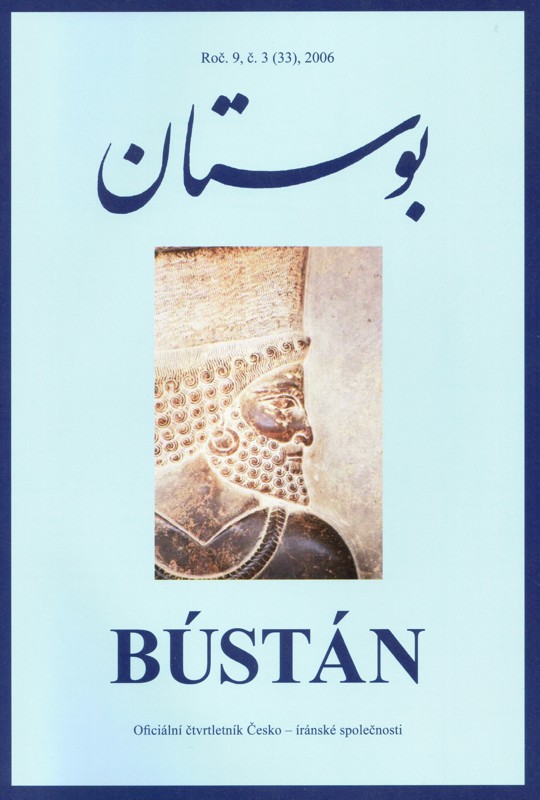
Khanevade Sarbaz (Soldier's family)
Nima Yushij (born November 1897 - died January 4, 1960), also called Nima (نیما), born Ali Esfandiāri, was a contemporary Persian poet. He is known for his style of poetry, which he popularized and called she'r-e now (new poetry). He is considered the father of modern Persian poetry.
Nima performed various experiments from 1922 to 1937 and composed other poems in forms such as quatrains and Afsaneh poems, where he developed this new form. During this time he composed the poem "The Soldier's Family", which shows that he not only distanced himself from the romantic expression and idea of myth and approaches a kind of artistic realism, but also understands the kind of human and social thinking and dimension. His lyrics lead to social poetry.
Nima Yushij
Khayam Publishing House, Barukhyan-Tehran Printing, p.60, 1927
Naghše parand
Naghše parand's work is a kind of test of literary taste, which is to show the author's skill in Persian. Behazin tries to describe the beauties of life with melodic words and poetic prose. In these writings, human activity finds a symbol of its reflection in the heart of nature. Social reality is described by natural meanings: a lonely and proud tree in a vast desert shows perseverance, rain washes away the night and gives hope. With the arrival of a new morning, we welcome the sun. The dry desert is an allegory of social emptiness.
Mahmoud Etemadzadeh-Beh-azin (1915-2006) was an Iranian writer, literary translator and political activist.
Behazin has translated a large number of modern Western classics and some works by Shakespeare and Goethe. Behazin is highly regarded in Iranian literary circles for his quality, mastery of Persian, the resulting beauty and thoroughness of his translations of Western literary works into Persian.
Mahmoud Etemadzadeh - Beh-azin
N.I.L. 1956 Teheran, 88 s.
Modire Madrese (Principal)
The narrator, who is tired of teaching, turns in his ideas to the principal of the primary school for his comfort and higher income, without knowing what difficulties he will cause. A culture-loving man established his seat in the middle of his land and provided it for twenty-five years for the purpose of establishing a school and education. This started the influx of children into schools and the roads were "plastered". Her parents' hearts softened, and in an effort to shorten the way for their "pets," they began building their homes around the school. Since then, land prices have risen sharply. However, the teacher's ideas were empty because …………
Jalāl Āl-e-Ahmad (1923-1969)
was an important Iranian novelist, short story writer, translator, philosopher, sociopolitical critic, sociologist as well as an anthropologist who was one of the first and most important contemporary Iranian ethnographers
Jalāl Āl-e-Ahmad
Entesharat Amirkabir, 1958 Teheran, s. 134
Folklore
This book deals with Iranian folklore, especially the little-studied dialect of a smaller ethnic group.
NAIRI Abdul Husajn
(First notebook) Tehran - Atashkadeh Printing House, 1959, 62 p.
(Second notebook) Tehran - Atashkadeh Printing House, 1959, 80 p.
Individual workbooks can be downloaded HERE:
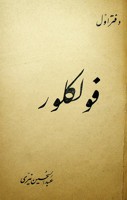
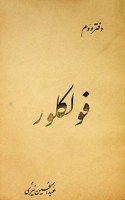
Se ghatre khun (Three drops of blood)
Sádegh Hedáyat (1903 Tehran –1951 Paris) was an Iranian writer, playwright, publicist and translator.
he committee of Hedájat's short stories Three Drops of Blood (translated by Věra Kubíčková in 1964) was published in Czech. The blind owl was highly valued by the Surrealists, filmed in 1987 by Raúl Ruiz, and the book was banned in Iran under both the monarchy and the Islamist regime. Sadajat Sadek was one of the Iranian writers who was appreciated by Czech Orientalists. Hedájat himself was very interested in Czech literature, especially Franz Kafka, whose several literary works he translated into Persian.
Sádegh Hedáyat
Matbae Roshanai, Teheran 1932, s. 151
Nameha (Letters)
Bozorge Alavi (1904 Tehran - 1997 Berlin) was an influential Iranian writer, novelist and political intellectual. Nameh 'ha va Dastan'ha-ye digar (Letters and Other Stories, 1952).
Bozorge Alavi
Bongahe Matbuati Setare, 1952, pp. 200
Atash zire khakestar (Fire under the ashes)
Mohammad-Ali Jamālzādeh Esfahani (1892 Iran - 1997 Geneva, Switzerland) was one of the most important writers of Iran in the 20th century, famous for his unique style of humor. Due to his enormous influence on Persian short story writing, he is often described in Iran as the father of this genre and the originator of the style of realism in Persian literature.
He published his first collection of Iranian short stories, Yeky bud Yeky nabud (It Wasn't) in 1922 in Berlin.
Jamalzadeh was nominated for the Nobel Prize in Literature in 1965. Currently, one of the Iranian Literary Prizes awarded bears his name. Jamalzadeh had close ties to Czech Orientalists, especially to Dr. Věra Kubíčková Stivínová.
Mohammad-Ali Jamālzādeh
Entesharate Sokhan, Tehran 1953, p. 31
Majma'-e Divanegan (Assembly of Madmen)
Sanatizade Kermani Abdolhossin (1895 Kerman-Iran-1973 Paris) Majma'-e Divanegan (Assembly of Madmen) is the oldest literary utopia in modern Persian literature.
Sanatizade Kermani
Matbae Ferdosi, Rasht-Iran 1956. pp. 48
EXTRA WOMAN
Jalal Al Ahmad
second edition, 1342, Tehran, Javid Press, Behran, Gorgan Street
Flowers that grow in hell
Mohammad Masoud: Dehati, editor of Mard Imroz newspaper
Ali Akbar Elmi Press, 1337 Tehran
Our people
Parto Azam
Ibn Sina Bookstore, Mehr Bookstore, Mehr Printing Company, 1325 Tehran
Theater in Iran
Behrouz Gharibpour
Katedra kulturních studií, Mardak Litography, Nile Printing, Tehran, 2014
The Group of the Condemned, Kafka's message by Franz Kafka
Translated by Hassan Qahemian, written by Sadegh Hedayat
Amir Kabir Publishing House, Tehran 1337
A man who sews a tail
A puppet play based on Iranian stories.
Javad Zulfaghari
Shadi Pourahmadi, Nowruz Honar, Tehran 2018
A goat that bells feet
A puppet play based on Iranian stories.
Javad Zulfaghari
Nowruz Honar, Tehran, 2017
Siavash, Faringis: plays, Iranian literature
Javad Zulfaghari
Nowruz Art Cultural Institute, 1377
A bunch of troubl, A Fistful of Troubles
Dastanak Collection, Mohammad Javad Khordmandi, Mir Kasri Publications, Tehran, 2014
A collection of traditional Iranian architecture
Geographical Organization of the country - Tehran, November 1973
Aniran-Seh Novin
D.Sh. Parto, Bozorg Alavi, S. Hedayat, Farhomand Press, Tehran 1931
Persische Teppich Gesellschaft A.G. 1911-1936,
Heinrich Jacobi, Deutschland
1911-1936, Heinrich Jacobi, Germany
PRINT: MEISENBACH RIFFARTH & CO. A.-G., BERLIN-SCHÖNEBERG
Masha Allah Khan da darbare Harun alrashid (Masha Allah Khan in Harun Al-Rashid Palace)
Iraj Pezeshkzadeh, Massoud Saad Printing House, Tehran - Iran 2536
Vag – Vag Sahab (Mister Whoah whoah)
by YAGOG, MAGOG and Co., Ltd., Printed at ROSCHENAI Press, Teheran, September 1934.
Reshk Pariha (Jealousy of the fairies)
(novel) - Mushfiq Kazemi, Roshanai Press, Tehran, March 1309
Talkh va Shirin (Bitter and sweet)
Mohammad Ali Jamalzadeh, Tehran 1334
Buse nakhostin (First Kiss)
Rezagholi Sepahi, Chehre Printing House, Teherán
Mahmud Agha ra vakil knid (Choose Mahmoud Aqara, Member of Parliament)
This play was performed in Tehran theater in November 1328. Asghar Tafakori played the role of Mahmoud Agha.
Mohammad Hijazi, Baradaran Fardin Printing House - Tehran, sales place: Sokrat Library, Saadi St., Tehran.
Yeky bud yeky nabud (once upon a time)
Seyyed Mohammad Ali Jamalzadeh, Publisher: Marafet Center, Tehran, Lalezar - Geneva 1343
Jik jik Alishah - ja ozae darbar Ghajar (Jik jik Alisha - or the condition of the Qajar palace)
Zabih Behrouz, a play in three acts, from the house of translation - registration number 1102, Tehran
Hasan Moghadam va „Jafarkhan az farang amad“ (Hasan Moghadam and "Jafar Khan came from Europe)"
Ismail Jamshidi, publishing and distribution of the book: Jar
Karim Shirei
Theater-Literature of the Constitutional Era, with an introduction and margins by Bagher Momeni, Sepideh Publishing House, 1315
24 hours in sleep and wakefulness
Samad Behrangi, Dunya Publishing House - Rozbahan Publishing House, 1347
Panj nalayshname az enghlab mashrute (Five plays from the constitutional revolution)
Gohar Murad - Gholamhossein Saedi, Amir Kabir Publications, Tehran 1345.
Hemase Babak Khoram din (Saga of Babak Khorramdin)
The saga of Babak Khorramdin narrated by Nad Ali Hamdani is more than a historical work, it is a fictional narrative in the context of historical events and unlike reference historiographies that have a news and official tone, with an exciting and sometimes dramatic expression, it impresses the reader with this character. It introduces the political and social aspects of Iran. Babak was a leader born from the mass of people who led the movement of Khorramdinan or Sorkh Jamegan (red clothes).
Nadali Hamdani, 1341, Tehran – Iran.



